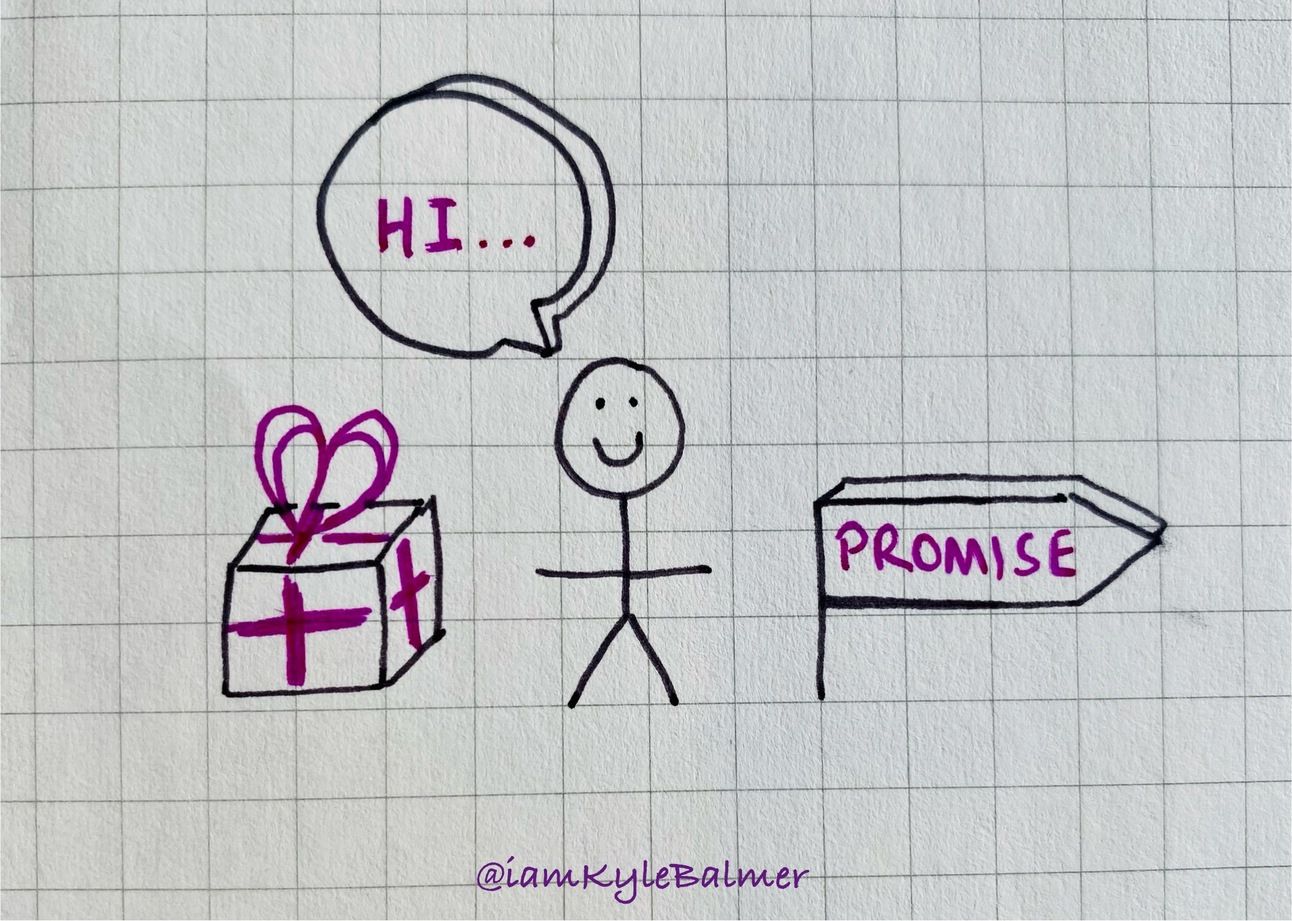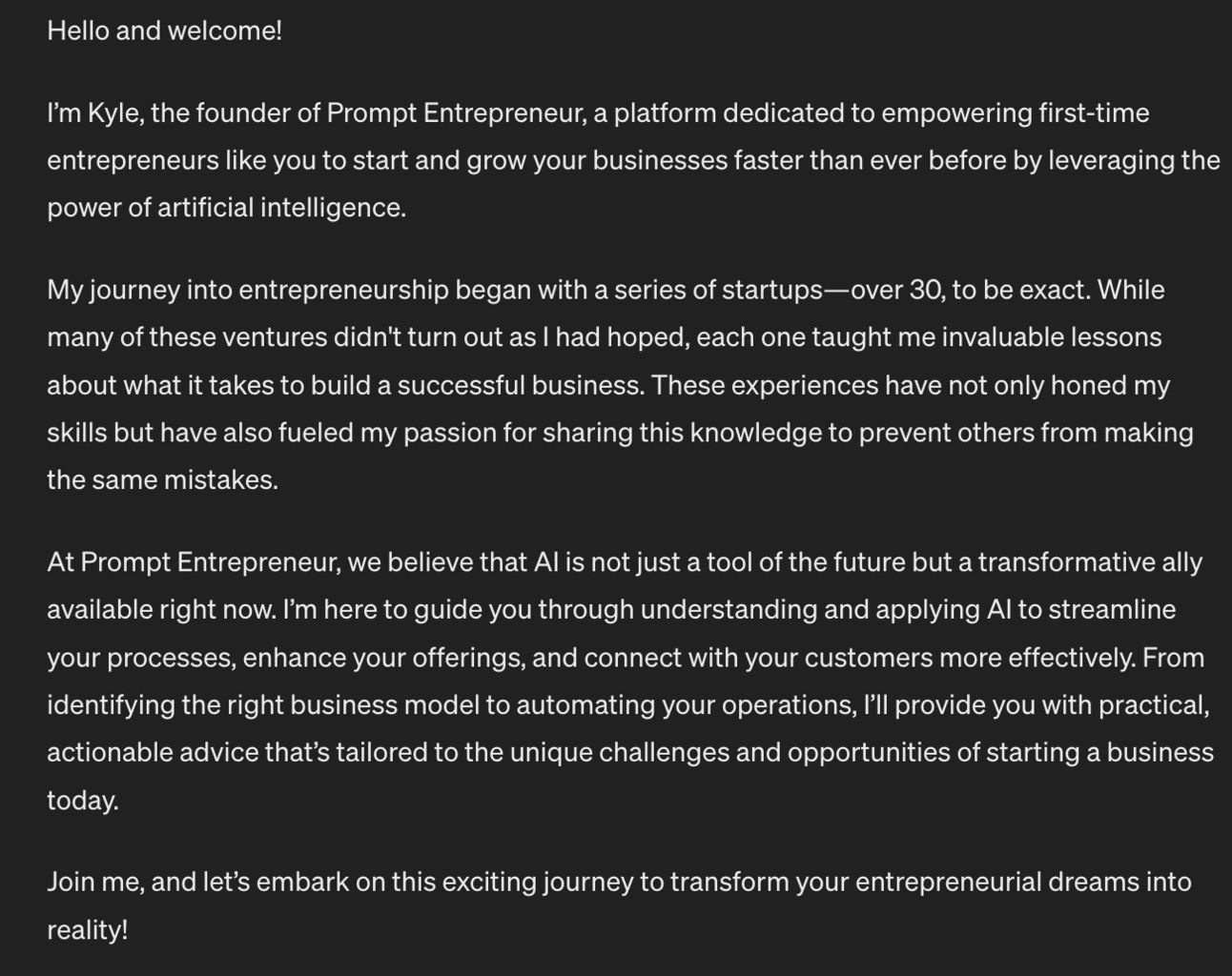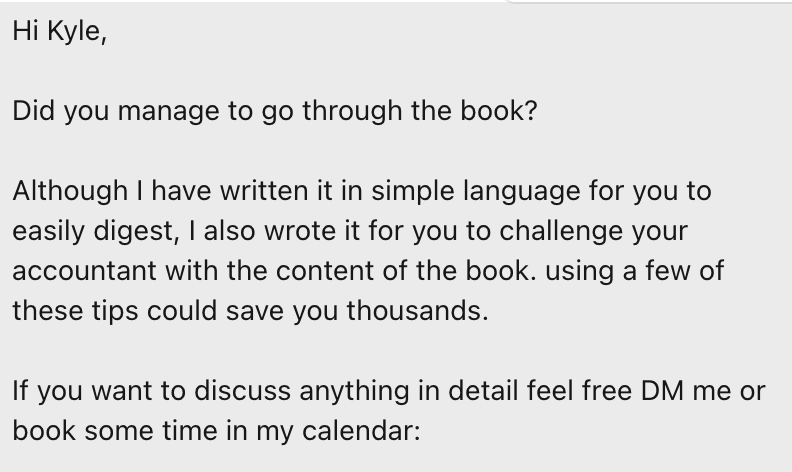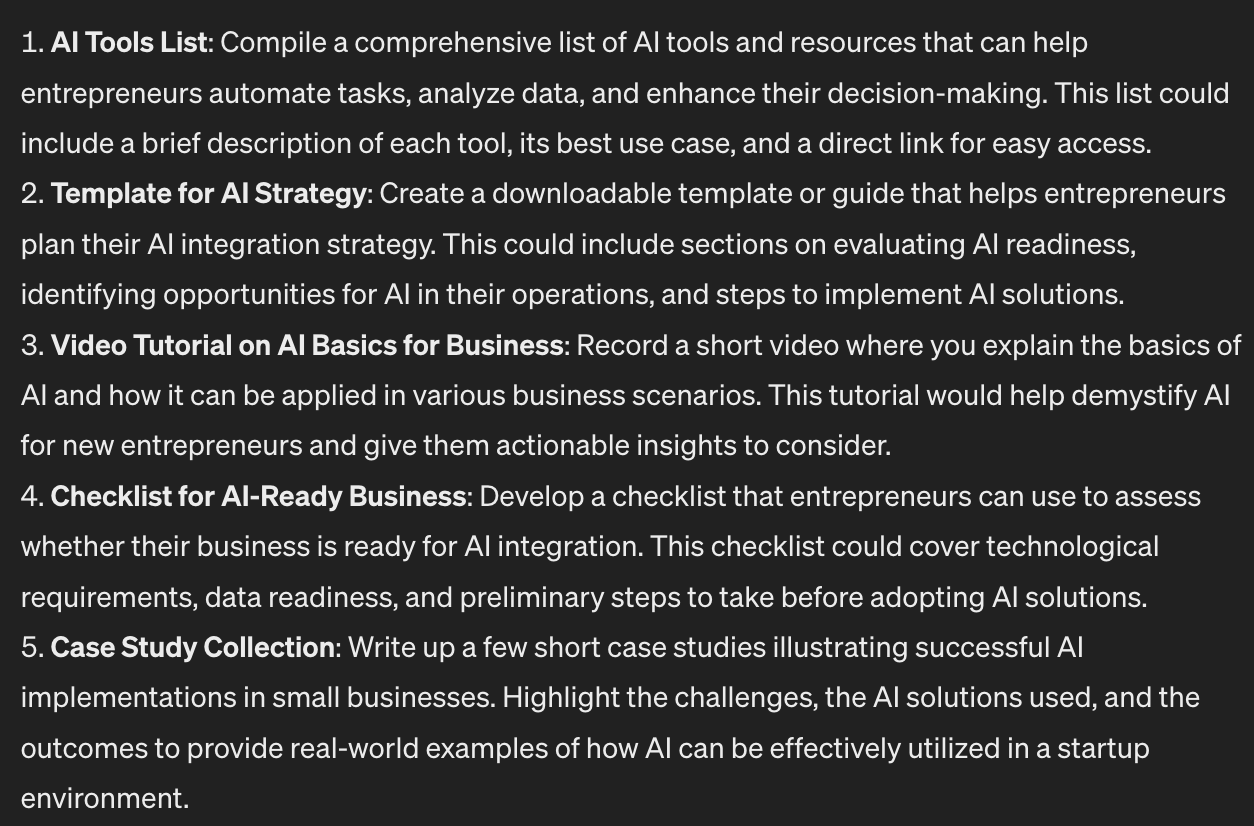Part 2 - The important Email 1
Now we begin to structure out our welcome sequence starting with, unsurprisingly, email 1.
Don’t worry too much about perfecting this email yet. We’ll pass through all 10 emails over the week and then go back and make sure everything works well together.
Let’s get started:
The important Email 1
- getting personal
- immediate gift
- promise of what’s to come
The first email needs to be the best in the sequence.
If you lose people they won’t open the rest of your welcome series. Which means no matter how good those emails are they won’t be seen.
So we need to nail Email 1!
We have one primary objective: getting readers to open the next email. Once they’ve done this they’ll get more and more used to opening your emails and (hopefully) eagerly expecting them!
We’ll do so by:
- getting personal
- immediate gift
- promise of what’s to come

Getting personal
First up you need to accelerate the know-like-trust sequence as quickly as possible.
We do this by introducing ourselves as a fellow human being.
I recommend going personal in the first email - telling them who you are and why you are happy to have them here with you.
Include a photo (or better yet video) of yourself to show people that you are a person. The welcome email immediately becomes a personal welcome rather than just another company email campaign.
Specifically let’s use this prompt to get started:
Act as a copywriter
Help me write a personal introduction that gets customers to know, like and trust me quickly
Collect the following information from me first:
1. Name + company name
2. Why I started the company and its mission.
3. how I'm going to help the reader
4. where I came from and how I got to where I am
Use this information to compose an introduction that:
1. warmly welcomes them
2. outlines how I'm going to help themThis will help generate a basic introduction for you:

Make sure to rewrite in your voice! Remember this is one of the most important emails you’ll ever write.
Add in lots of personal details to remind people you are a person talking to them, another person.
Immediate gift
We are next going to immediately “bribe” our audience! A soft bribe!
We’re going to give them a gift. Not one that they were expecting. And we expect nothing in return. Instead we’re giving them this gift to overdeliver.
I personally give people a link to my 10 Steps Course in my first welcome email. It’s an immediate drop of value that makes them pay attention.
Find something similar that you can give them out of the blue in your first email.
Importantly it should not be too long or hard to consume. Don’t give them a 200 page eBook!
They’re just getting to know you. The last thing they want is homework.
I recently got one email that sent me a 130 page book. Then followed up with this:

Good lord don’t do this.
Give them a quick punch of value - something they can quickly consume and immediately understand the value of.
Here’s a quick prompt to use after the previous one:
Act as a marketing strategist
After the email introduction I want to provide my readers with something extremely valuable as a free gift.
The free gift should be:
-fast for me to create (<2 hours)
-easy for the recipient to consume
-immediately recognisable as valuable
Give me 5 suggestionsThis will give you some ideas to start with:

By giving them a freebie we are immediately giving them massive value just for signing up.
We are also using the psychological concept of reciprocation. It’s a powerful mental tool.
Basically if someone gives you something that opens up a mental loop. The only way to close that loop is to respond in kind by giving them something. This a powerful sales hook for later.
Once we’ve dropped our first free gift we’re then going to roll this into the next 4 emails with the…
Promise of what’s to come
Now that you’ve given them their gift the trap is baited!
We follow this up with a reason for them to continue to open your welcome emails: more value.
This could come in then form of more free gifts if you have a sequence of freebies that makes sense. Or it could be the emails themselves. We decide this in the next Part where we build out emails 4-5.
Either way it’s important in this email, Email 1, to tell readers that there is more coming.
We don’t need to explicitly list out the upcoming freebies (although this is an option). Instead a simple “If you find this useful you will love what I’m sending you over the next few days. Keep your eyes peeled so you don’t miss those emails.”
We’re using fear of loss here to get the open. They’ve been promised something. And to claim the value they need only to open the next email. By not opening those emails they will not receive what they (psychologically) now believe they are owed.
They’ll open those next emails - believe me!
In the next Part we’ll work out exactly what those value bombs are going to be.
For now though we are done with Email 1. We’ve used it to quickly provide a free gift and told them to expect more. This will be enough to get the next emails opened which is when we’re really going to start delivering value.